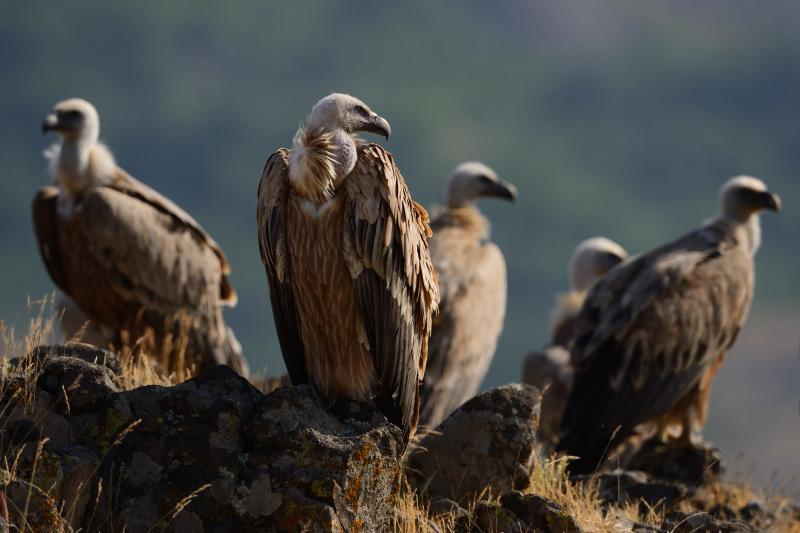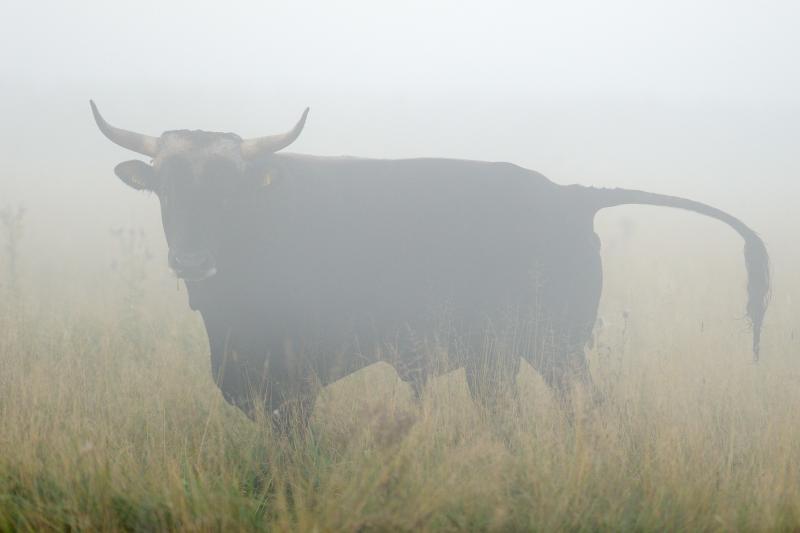Rewilding Europe has a new solution for biodiversity management and revives ancient animals in the process.
Rhodope Mountains in Bulgaria, rising to over 2 000 metres, with deep river gorges and steep cliffs, cover close to 15 000 square kilometres, extending into Greece in the south. This is one of the most important breeding sites for the globally endangered Egyptian vultures in the region, and the only one for griffon vultures in the country.
The Rhodopes are one of eight pilot sites for a network with a new vision for nature conservation that’s called Rewilding Europe. As people increasingly move into urban areas, Rewilding Europe takes rural areas where the population is diminishing and makes them wild again, restoring self-sustaining ecosystems that are vital for biodiversity and, at the same time, developing new, nature-based economies. And it turns out they have a business case – proven by the fact the European Investment Bank just lent them EUR 6 million. The loan is backed by the Natural Capital Financing Facility established by the European Commission and the EIB.
“There is increasing recognition that public grants are not enough to cover the costs of conservation efforts. Fortunately, there’s a great business case for investing in nature,” says the EIB’s environmental and climate finance investment officer Jane Feehan. “Rewilding Europe has nature at its heart, but they’re building a strong business model too, and are now able to take on loan finance to expand their activities.”
Vultures and aurochs and horses, oh my
In Bulgaria, in the Rhodopes, this took the form of working with local entrepreneurs to boost small-scale nature based tourism by repairing wildlife photography hides, training local entrepreneurs and demonstrating the commercial value of wild nature. The ultimate objective is to finance the rewilding of the region, and stop poisoning, poaching and power-line electrocutions that reduced the number of griffon vultures to only 10 pairs at the lowest point.
Rewilding Europe introduced an anti-poisoning dog unit to spot hazards for vultures, is building artificial nests to attract black vultures to start new colonies, and started working with local electricity companies to insulate their power lines. And while the locals were using poison baits to keep the wolf population down, Rewilding Europe actually brought in fallow and red deer so that there would be more natural prey for wolves – a key selling point in attracting vultures, because the birds feed on what’s left of the carcass once the wolves finish eating.
So how do the locals react? “We are, of course, involving them in the new approach,” says Rewilding Europe’s head of rewilding, Wouter Helmer. “There are fewer and fewer shepherds in this area, and the ones remaining understand that if we bring in deer, we also distract the wolves from their sheep and their cattle, as it is always easier for wolves to go for the wild animals.”
The locals also understand that the rewilding efforts help diversify their income by appealing to tourists from the capital Sofia and outside the country. That means business for bed-and-breakfasts, in addition to livestock management.
“They understand a wolf alive is worth more to them than a dead one,” says Helmer. “So our work is starting them rethinking their relationship with nature. It will not be an overnight success, but we commit to being there for at least ten years, and offer them a whole toolkit.”

Griffon vultures in Rhodope mountains. Photo: Staffan Widstrand/Rewilding Europe
Bringing back an ancient species that went extinct
The tourism opportunities are not limited to photography hides in the Rhodopes. In fact, Rewilding Europe has even launched European Safari Company. Compared to the African beasts usually associated with safaris, what could be so exciting about European fauna, I hear you ask?
Let me tell you about aurochs. These are the big-horned wild ancestors of domestic cattle, up to 1.80 meters tall and weighing up to more than a ton, which are depicted on cave paintings. In Greek myth, Zeus took the form of an aurochs bull to seduce and kidnap the beautiful princess Europa, thus founding Europe. The aurochs developed during what is called the Pleistocene and went extinct around 400 years ago, but their genes are still alive and well in some ancient cattle breeds.
Part of Rewilding Europe’s job is using these ancient cattle to breed the Tauros, a species of auroch-type wild cattle that’s able to survive on its own. Besides sounding like a great tourism draw, why do we need these ‘supercows’, as they’ve already been branded?
“You have to understand how Europe’s ecosystem functions,” explains Helmer. “Biodiversity requires a diversity of landscapes – not only forests, but also more open areas. Now, for the first time in history we have come to a stage where in many places there is no grazing anymore, so the diversity of natural grasslands with their flowers, birds and butterflies is no longer maintained by its natural architects.”
Originally, the aurochs was one of the key species to take care of that. Along with them, and especially for the last millennia, this task has partly been accomplished with the help of farmers and their livestock, which at least in its traditional grass-grazing mode, is quickly coming to an end.
“Most of our young generation does not want to become farmers or shepherds, so in large areas the natural grazers are extinct, and domestic cattle have left as well. So we thought we need to rethink our entire approach and try to bring back the original grazers,” Helmer says.
He explains that 99% of the genes of the original grazers are still in the genes of domesticated breeds today, so the Tauros Programme has been using various primitive breeds to create a more resilient cow, one that could fend for itself. There are currently several hundred animals bred, and early results of introducing them to the wild are showing promise, Helmer confirms.

Bull of second generation crossbreeds at the Tauros/Aurochs breeding site in the Netherlands. Photo: Staffan Widstrand/Rewilding Europe
A true bank of nature
The wild horses released in the Rhodopes, as well as the new auroch-like tauroses, and the European bison are all part of another innovation that Rewilding Europe’s brought about – the European Wildlife Bank. It is almost like a real bank, Helmer tells me.
“You can lend a herd of for example 100 primitive horses from the bank to graze on your territory, and in 5 years’ time, you have to give back half of your herd. As the herd typically grows by around 25% annually, the bank gets back 150, and you get to keep 150,” says Helmer. “You can consider that a very nice interest rate.”
If you then show the bank how you’ve been able to expand the grazing area available for the wild animals, you can keep the additional 150 for a loan for another 5 years – during which the herd will, expectedly, again multiply and the same rule applies after 5 years again.
Minus the ones who get killed by the wolves in the Rhodope mountains, and then picked on by the – hopefully – increasing vulture population. While the tourist takes photographs from the secret hide that Rewilding Europe, with a little help from the EIB, has helped renovate. Now that’s the circle of life!
(P.S. As opposed to the loans from the European Wildlife Bank, the EIB loan to Rewilding Europe Capital is still expected to be repaid in euros, not in any breed of animal, investment officer Jane Feehan confirmed.)
